How to Cook Basmati Rice
Basmati rice is definitely a favorite in my house! It’s a long-grain white rice that originated in India and is grown in the Himalayas. It’s fragrant and aromatic, boasting slightly nutty and floral flavors that add a bit more oomph compared to traditional white rice. When cooked properly, it comes out light, fluffy, and flavorful!
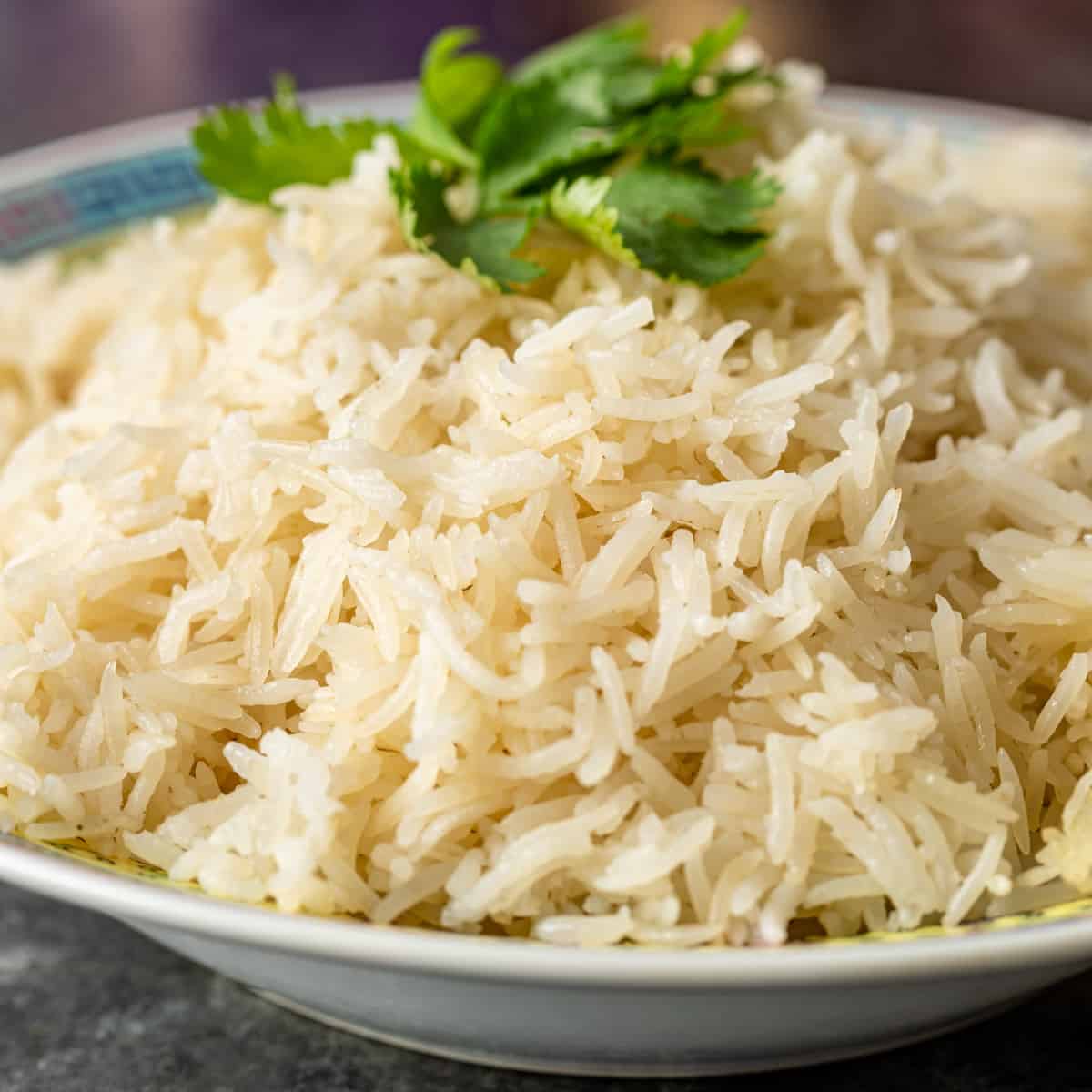
Some of my favorite basmati rice recipes include baked basmati rice pilaf, koshari (Egypt’s national dish!), and a comforting lentils and rice dish called mejadra. There are so many different ways to serve basmati.
Like all types of rice, there’s a certain finesse involved in cooking it. The most important aspect? You need to make sure that you use the right amount of water! I’ll share the correct quantities and more in this article! You’ll also learn:
- How long to cook basmati rice
- Different cooking methods for basmati rice, including the stove, microwave, and Instant Pot
- Ways to use basmati rice and some recipes to inspire you
Let’s dive in!
Should you wash basmati rice?
YES! Wash the rice under cold water using a sieve or colander until the water runs clear. Shake any excess water away. This is a vital step prior to cooking and removes any excess starch, giving you separate, fluffier grains. I’ve found residual starch from the grains will gelatinize during the cooking process and create sticky, clumped cooked grains. We want fluffy!
How to Cook Basmati Rice
Learning how to cook basmati rice isn’t difficult! As I mentioned above, the most important thing to keep in mind is the rice-to-water ratio. Different types of rice will require different quantities of water. Basmati is a type of long-grain white rice, and it doesn’t require a lot of water to cook it. For stovetop cooking:
Use 1 ½ cups of water for every 1 cup of dry basmati rice.
You need to adjust the ratio for the different cooking methods that I outline below. Make sure to pay attention to these small differences — you’ll end up with light and fluffy rice every time when you do!
How Long to Cook Basmati Rice
You may also be wondering how long to cook basmati rice. In the same way that the rice-to-water ratio changes, as will the cooking time!
- On the stove: 12-minute cook time, 10-minute rest time
- In an Instant Pot: 6-minute cook time, 10-minute rest time (to release the pressure)
- In the microwave: 20-minute cook time, 5-minute rest time
- In a rice cooker: 12-15 minute cook time, 10 minute rest time (the cooking time may vary depending on your rice cooker)
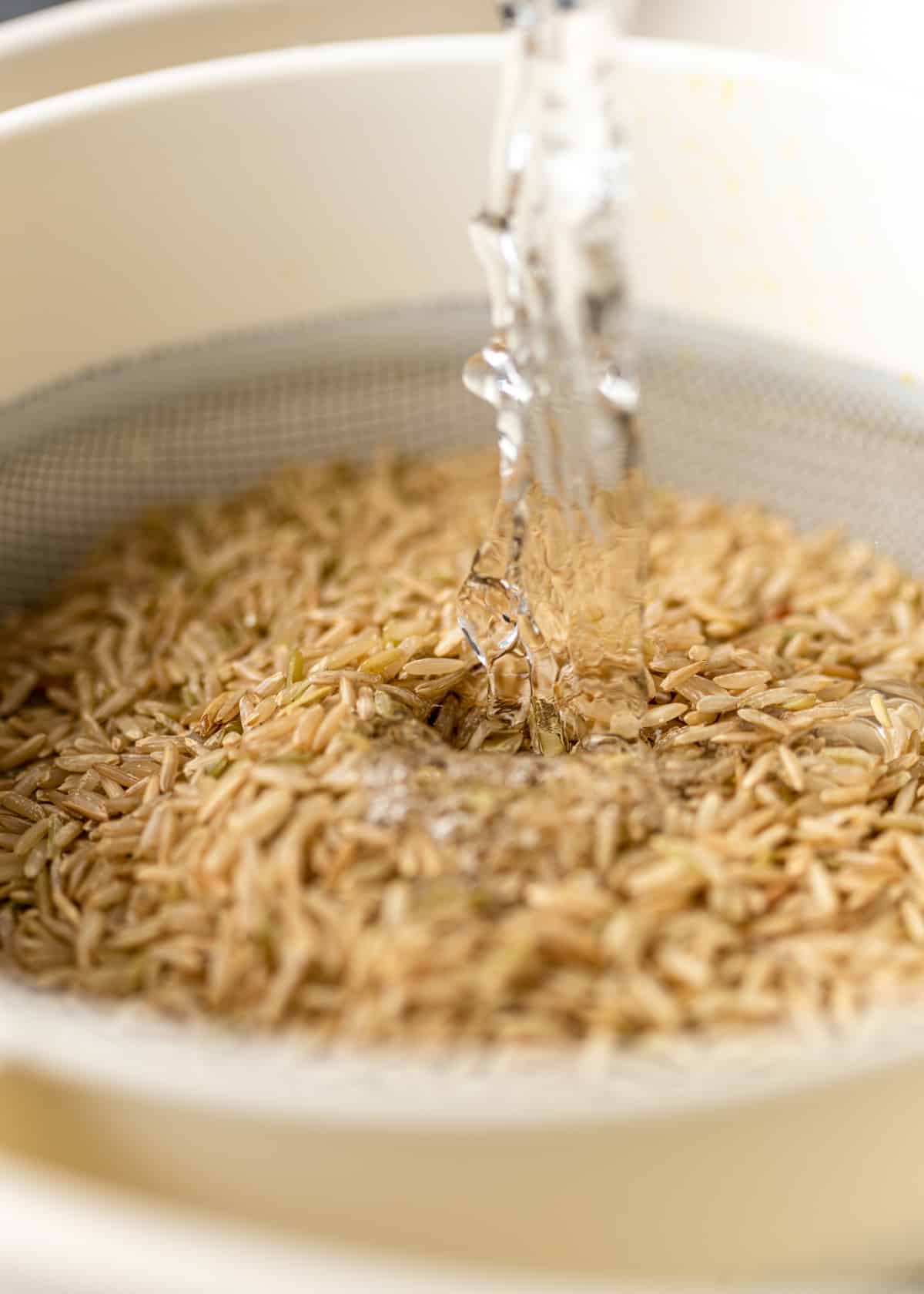
How to Cook Basmati Rice on the Stove
Stovetop cooking is my preferred method for cooking basmati rice. It’s easy and doesn’t require a special appliance.
Step 1: Place 1 cup of rinsed basmati rice and 1 ½ cups of water into a saucepan and bring to a simmer over medium heat. Cook uncovered.
Step 2: Once the surface becomes bubbly and foamy, reduce the heat to medium-low and allow the rice to simmer for 12 minutes.
Step 3: Remove the pan from the heat and allow the rice to rest for 10 minutes. Fluff with a fork before serving.
How to Cook Basmati Rice in the Microwave
I think we’ve all made rice in the microwave at some point! Simply pour the rice and water into a microwave-safe bowl, press a few buttons, and you’ll have perfectly cooked results in no time!
Step 1: Place 1 cup of rinsed basmati rice and 2 cups of water into a microwave-safe bowl with a vented lid — it’s important to use a lid with holes in it as this will allow any excess steam to escape.
Step 2: Microwave on High for 5 minutes. Reduce the heat to Medium and cook for an additional 15 minutes.
Step 3: Remove the bowl and let it sit, covered, for 5 minutes. Fluff with a fork before serving.
How to Cook Basmati Rice in a Rice Cooker
If you have a rice cooker, you’ll naturally want to know how to cook basmati rice in it! It’s a convenient way to prepare rice, and cleanup is a breeze.
Step 1: Place 1 cup of rinsed basmati rice and 1 ½ cups of water into your rice cooker and stir.
Step 2: Select the Normal Rice setting and press Start to cook for 12-15 minutes. Keep in mind that the cooking time will vary depending on what kind of rice cooker you have.
Step 3: Allow the rice to rest in the rice cooker for 10 minutes. Fluff with a fork before serving.
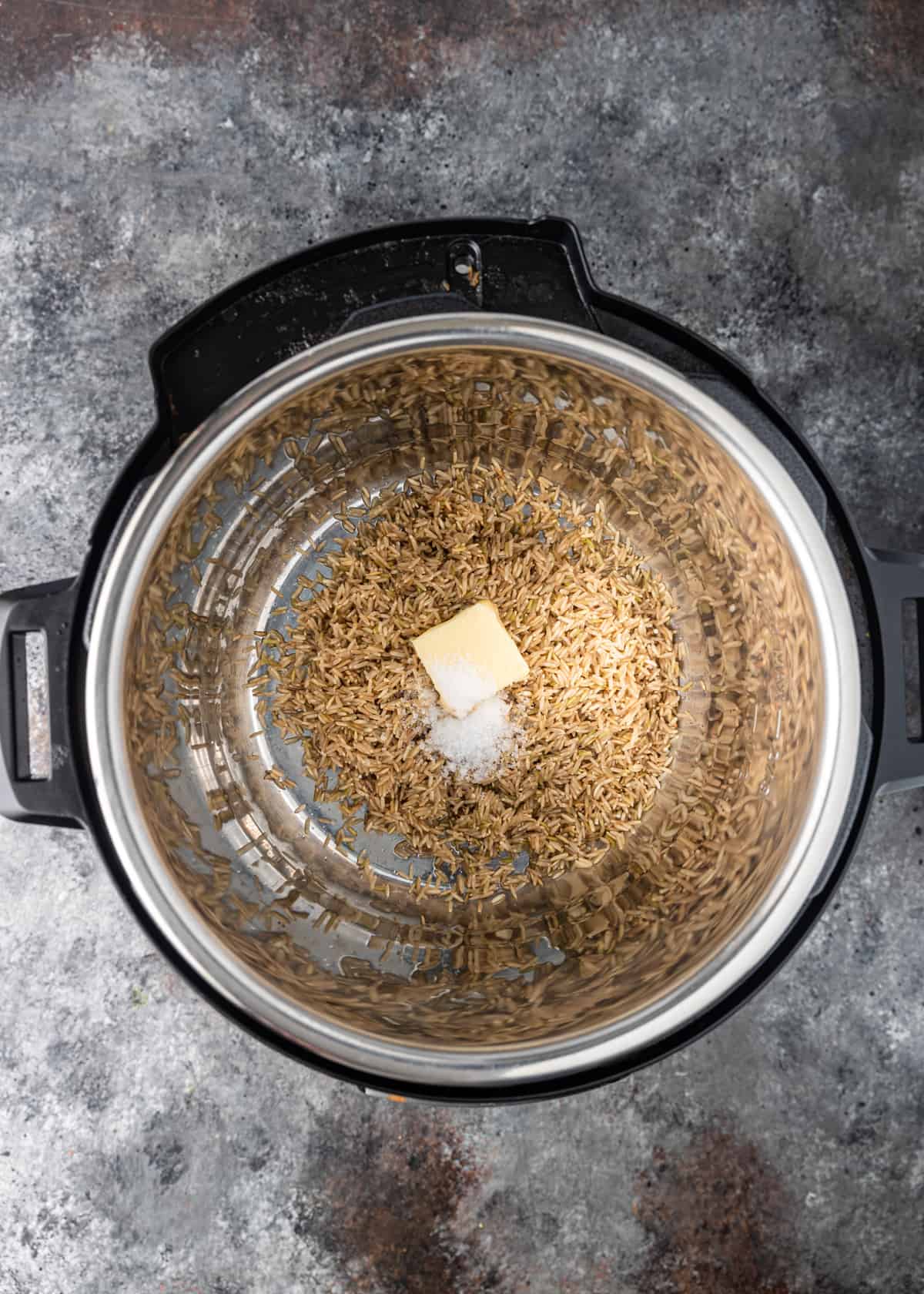
How to Cook Basmati Rice in an Instant Pot — Pressure Cooker
Another way that I like to cook basmati rice is in my trusty Instant Pot. There isn’t much this appliance can’t do! This method is faster than cooking on the stove. Read more about it in my other post, Instant Pot Basmati Rice.
Step 1: Place 1 cup of rinsed basmati rice and 1 cup of water for al dente and 1 1/4 cup for fluffier rice, into your Instant Pot. Place the venting knob in the Sealed Position.
Step 2: Close the lid and Seal. Pressure cook the rice on High for 6 minutes for white basmati rice, (18 for brown basmati). Allow to naturally release for 10 minutes.
Step 3: Open the vent carefully to release any remaining pressure. Fluff with a fork before serving.
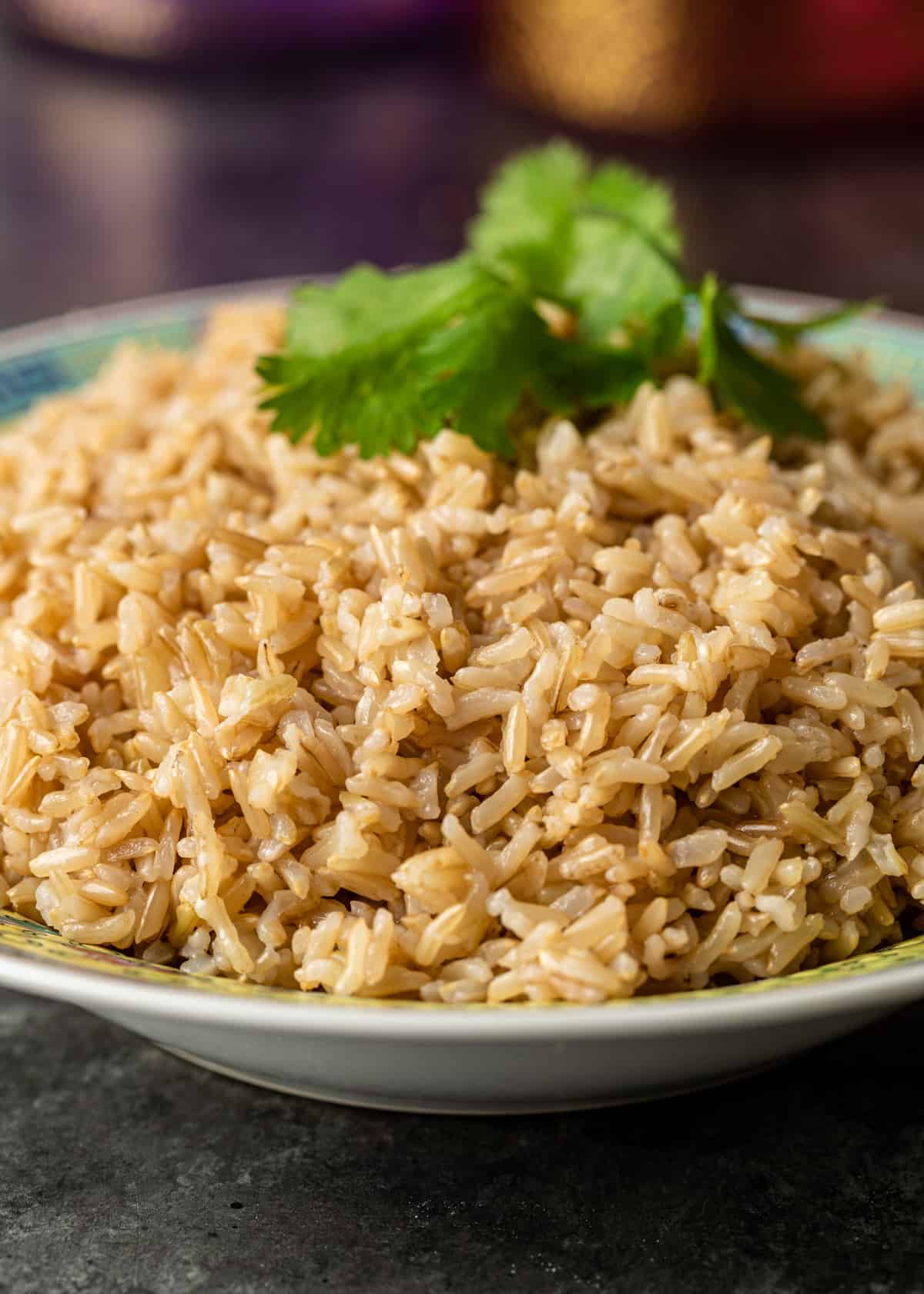
Ways to Use Basmati Rice — Serving Suggestions
There are so many different ways to use basmati rice! I typically use it in:
- Rice pilaf: Basmati is one of the best types of rice to use for rice pilaf dishes! Its light and fluffy texture and long grains full of starch mean that it won’t stick together when you cook it.
- As a side dish: The nutty and floral flavors of basmati rice work with so many main dishes. Seafood, meat, poultry, and vegetables all pair wonderfully with it. And, I can’t forget about curry! Basmati is the ultimate accompaniment for any type of curry.
- In salads & soups: You can instantly make salads and soups heartier with the addition of basmati rice. I also love the idea of replacing pasta with rice for pasta salad, or in a soup!
5 Great Basmati Rice Recipes
Now that you know how to cook basmati rice, it’s time to share my favorite basmati rice recipes!
- Lebanese vermicelli rice with meat (hashweh)
- Baked basmati rice pilaf
- Lubia polo (Iranian rice dish)
- Jeera rice recipe (steamed or boiled)
- Mulligatawny soup
FAQs
What is the Best Way to Cook Basmati Rice?
It’s all about your personal preference! As I mentioned, stovetop cooking is my favorite way to cook basmati rice. It’s quick and easy — and doesn’t require a special appliance. That said feel free to dry the other methods! You can cook basmati rice in an Instant Pot, microwave, or rice cooker too!
What is the Ratio of Water to Basmati Rice?
It depends on the cooking method you use. I recommend using 1 cup of dry rice for every 1 ½ cups of water for the stovetop and rice cooker methods. Increase this ratio to 1 cup of dry rice for every 2 cups of water for the microwave. Decrease the ratio to 1 cup of dry rice for every 1 cup of water for the Instant Pot.
How do You Make Basmati Rice Fluffy and Not Sticky?
First be sure to rinse and drain the rice prior to cooking. Also, by paying close attention to the rice-to-water ratio and the cooking time!
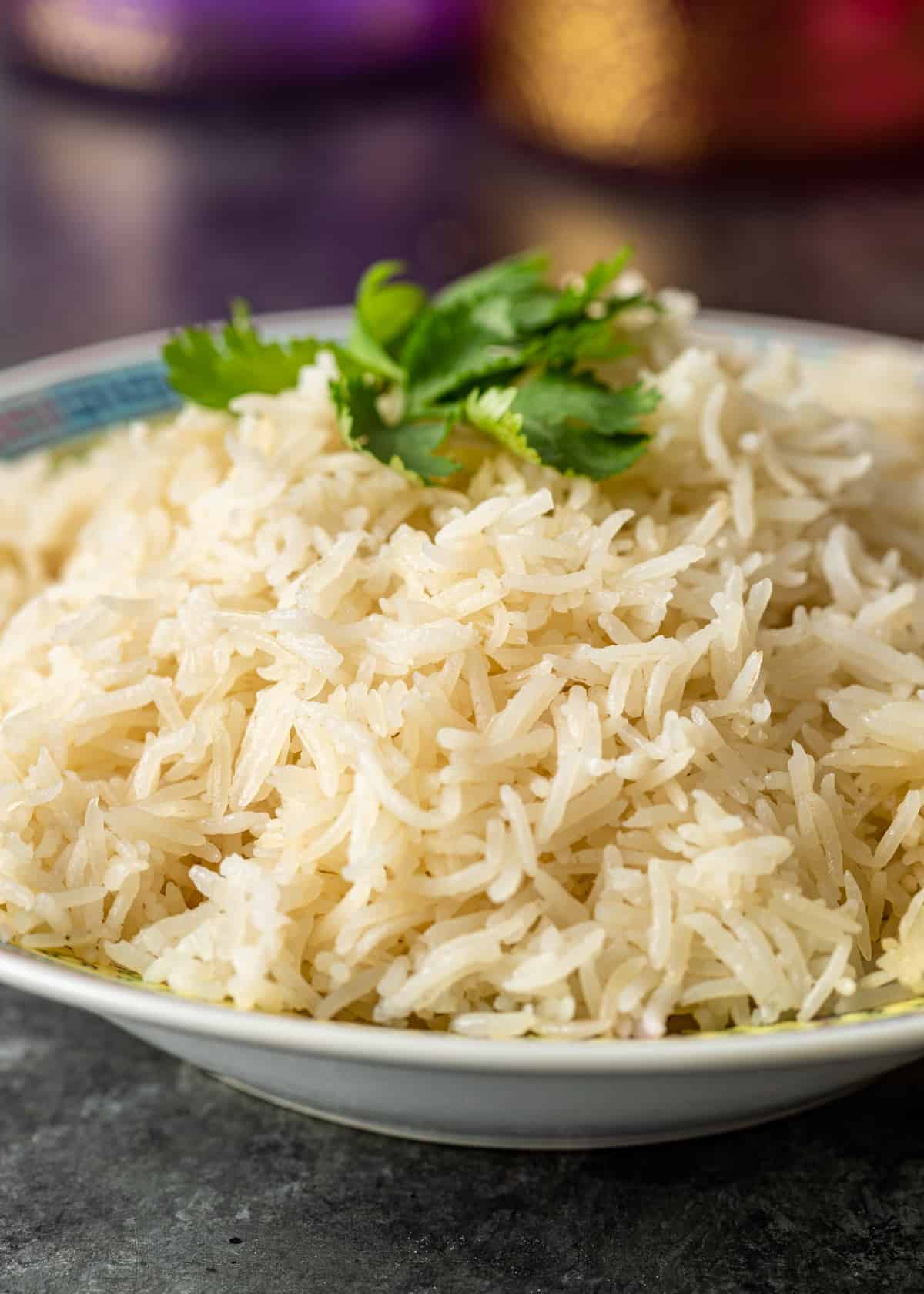
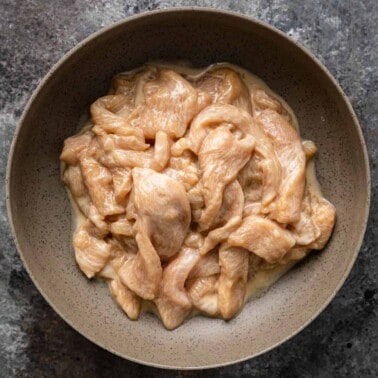
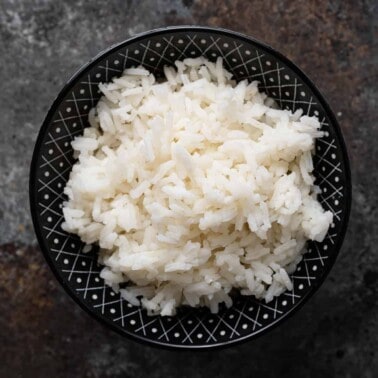
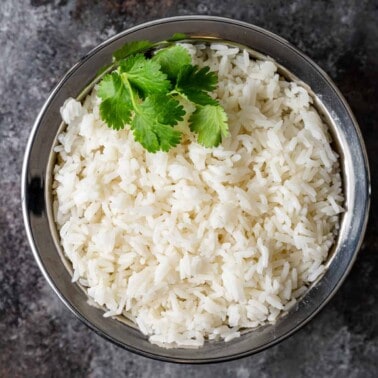
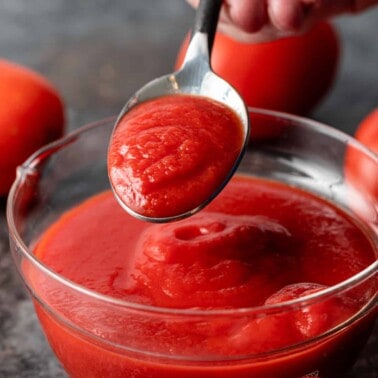








we find basmati to be quite delicate and the lovely long grains tend to break if we don’t give them a 30 minute pre-soak.
By all means, do what works best for you Emilia. Thanks for following along here!
how about ways to cook brown rice? so much more nutritious than all this white stuff. Yes, i am aware many prefer the white,
Sorry for the late reply as I have been over in Egypt researching new recipes to share here. I hope by now you’ve seen the post on the brown rice?
Kevin,
Would you comment on the method of rice cooking using an abundance of water then draining, like in cooking pasta.
Sorry for the late reply as I have been over in Egypt researching new recipes to share here. For me that method reminds me of cooking barley. Typically it serves up soggy and overcooked rice for my taste, but by all means, whatever you like.
No rinsing and no soaking? I always use your stovetop method but do both first – esp the former since I don’t buy the rice grown in the US which is a poor imitation of the real thing.
Sorry for the late reply as I have been over in Egypt researching new recipes to share here. By all means feel free to rinse Gale!